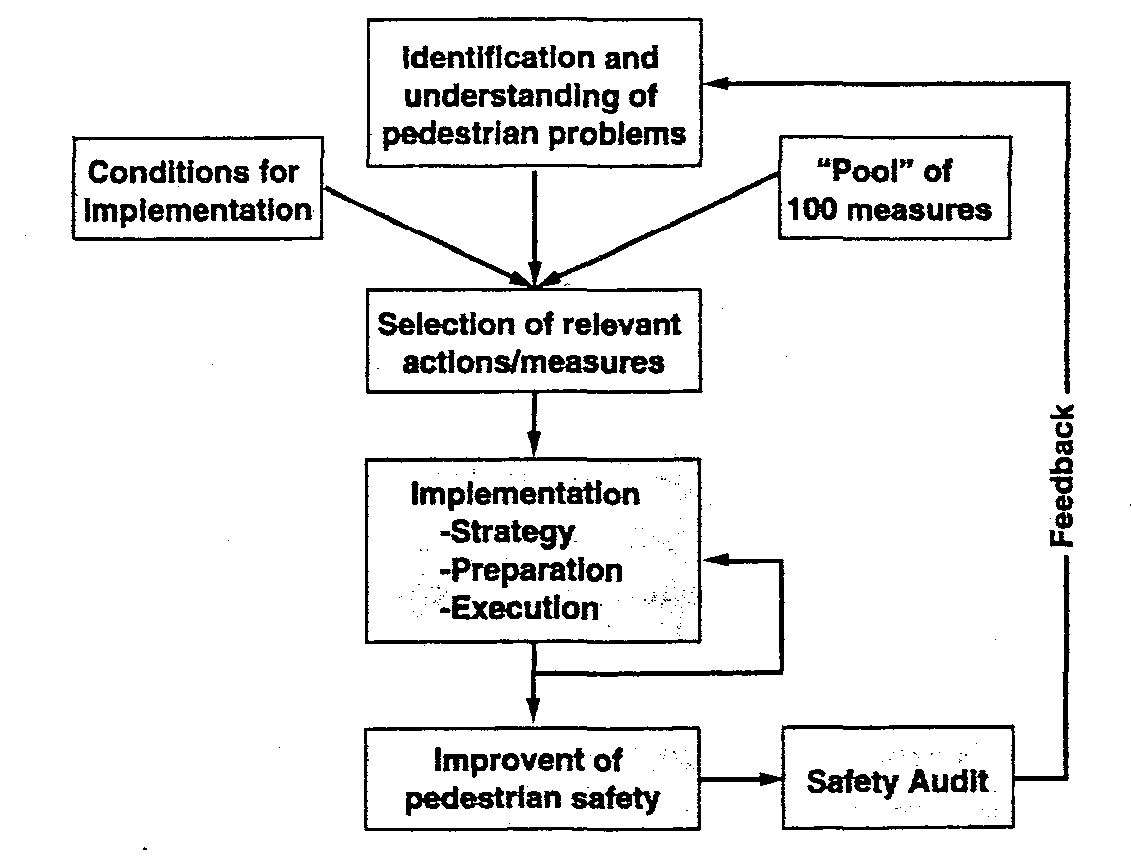
This research, based on an extensive review and assessment of pedestrian safety problems and countermeasures found today in the European countries, aims to examine the implementation implications for the introduction of pedestrian safety measures into the “traffic culture” of Europe. The framework, the different levels and the organisational requirements for the im-plementation of a large list of more than one hundred pedestrian safety measures have been discussed. The results of this research point out the importance of the relatively new concept of promoting pedestrian mobility. Through its stress on non-restrictive safety measures, this new approach has been aimed to highlight the multiple benefits that can be achieved through a persistent and consistent pursuit of pedestrian-friendly environments. Furthermore, one par-ticular characteristic of this new approach is the avoidance of “recipe-type” countermeasures to pedestrian safety problems as it is considered more advisable to adapt the selected measure to the specific case examined – and to go for balanced and comprehensive solutions as far as possible. This new approach is reflected in the proposed framework with all necessary actions for successful implementation of technical non-restrictive measures aiming to improve pedes-trian safety and mobility at the European cities.
| ID | pj9 |
| Manuscript | |
| DOI | |
| Tags | pedestrians, road infrastructure, road safety measures, traffic management |






